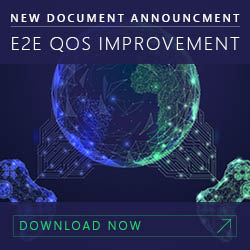This blog was submitted to the WBA by Gunnar Almgren, Senior Product Manager, Smartphone Software at Birdstep.
Now that the EU has confirmed data roaming surcharges will end on June 15th, 2017, it is time for MNOs not just in Europe but around the whole world to plan for an era where mobile data is no longer a big revenue earner in its own right. The EU move will boost roaming in Europe, while elsewhere SIM swaps will continue to be popular as a way of gaining temporary access to local networks at affordable prices. For the home MNO, such roaming and SIM swapping might appear like lost revenue opportunity but it does bring one great potential benefit in being able to gain valuable insights into competitors. This can be done providing the client device is capable of monitoring service performance and user activity in the background while the user roams and then passing this data on to the home MNO for analysis. There is then the possibility of benchmarking the MNOs providing the inbound roaming services in the visited countries, enabling both data performance and network coverage to be quite thoroughly monitored.
But MNOs also want to know what their subscribers get up to when they roam and this includes time spent accessing Wi-Fi hot spots as well as cellular networks. They want a complete picture of their subscribers’ mobile activities while they are off their networks, so that they can plan how to lure them back as often as possible. Knowing what subscribers do while travelling will enable MNOs to offer attractive and perhaps personalized roaming packages that will help them upsell additional services such as messaging and premium video. This will be increasingly important as consumers come to expect ubiquitous access to such services wherever they roam, which is not often the case at present.
This is where Birdstep comes in with our Smart Analytics 3.0 package designed to capture and analyse data about users, devices, networks and services. We recognized that operators want to get data about their subscribers’ experience and activities in a timely fashion but are limited in the resources they can devote to that. We enhanced Smart Analytics 3.0 in June 2015 with additional dashboards presenting easily digestible snapshots of a service and user activity, along with better facilities for structuring and exporting data into key operational and business support systems. Now operators can specify precise rules governing what data to collect, when to collect it, how frequently, and where to export it. This provides exactly the data and resulting insights that they want, when they want it, coupled with the ability to quickly and dynamically change this should the need arise.
What we provide uniquely is data from the client and also networks including Wi-Fi hot spots that are foreign to the MNO. We also provide the software that combines this with data the operator already has about its subscribers and its own infrastructure from existing OSS, BSS and CDR (Call Data Record) systems. Then we perform the analytics to derive actionable insights from this combined data set.
We can therefore provide operators with a broader picture by keeping track of where users are and how long they spend on specified networks or activities, even if they change their SIM card or come in over a Wi-Fi hot spot. We can then compile higher level reports detailing information such as which countries had most travellers, which experienced the least data usage, or which ones saw most deferring to Wi-Fi. This in turn makes it much simpler to find the best focal points for targeted roaming packages. At the same time we can benchmark MNOs in the various visited countries, which can then help determine how best to target investment on infrastructure and services to make them more competitive.






